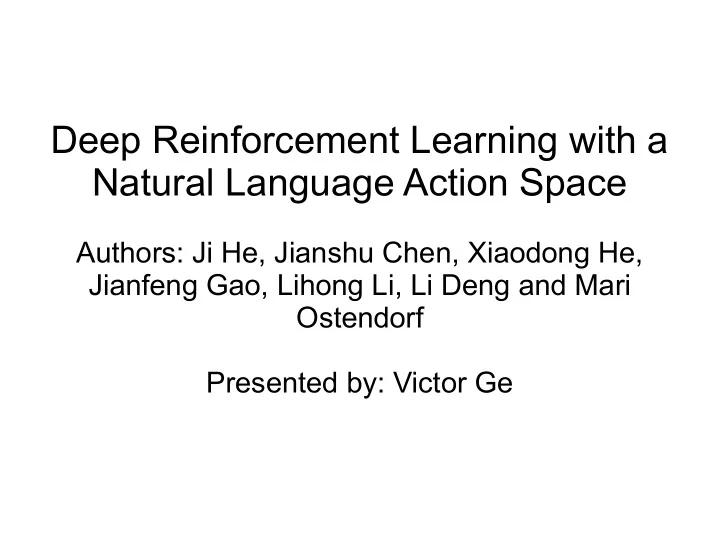

Deep Reinforcement Learning with a Natural Language Action Space Authors: Ji He, Jianshu Chen, Xiaodong He, Jianfeng Gao, Lihong Li, Li Deng and Mari Ostendorf Presented by: Victor Ge
Background
Motivation ● How to do credit assignment when the action space is discrete and potentially unbounded. ● I.e. human-computer dialog systems, tutoring systems, and text-based games.
Q-learning architectures
Deep Reinforcement Relevance Network (DRRN) ● Factorize DQN into state representation and action representation. ● Interaction function – can be inner product, bilinear operation, nonlinear function, etc. ● In experiments, inner product and bilinear operation give similar results. ● Using nonlinear function (i.e. DNN) degrades performance.
Details ● Bag of words text embedding ● 1-2 hidden layers ● Experience replay buffer ● Softmax action selection:
Experiments – text-based games ● Parser-based games can be reduced to choice- based games if there is a finite number of phrases that the parser accepts.
Experiments – text-based games
Experiments – text-based games ● Human baselines: ● "Saving John": -5.5 ● "Machine of Death": 16.0
Experiments – paraphrased actions ● Question: Is DRRN memorizing the right action? ● State space is small (<1000) ● Replace 81.4% of action descriptions with human paraphrased descriptions. ● Standard 4-gram BLEU score between paraphrased and original actions is 0.325 ● DRRN gets 10.5 average reward on paraphrased game vs 11.2 for original "Machine of Death" game
Experiments – paraphrased actions
Experiments – paraphrased actions
Recommend
More recommend